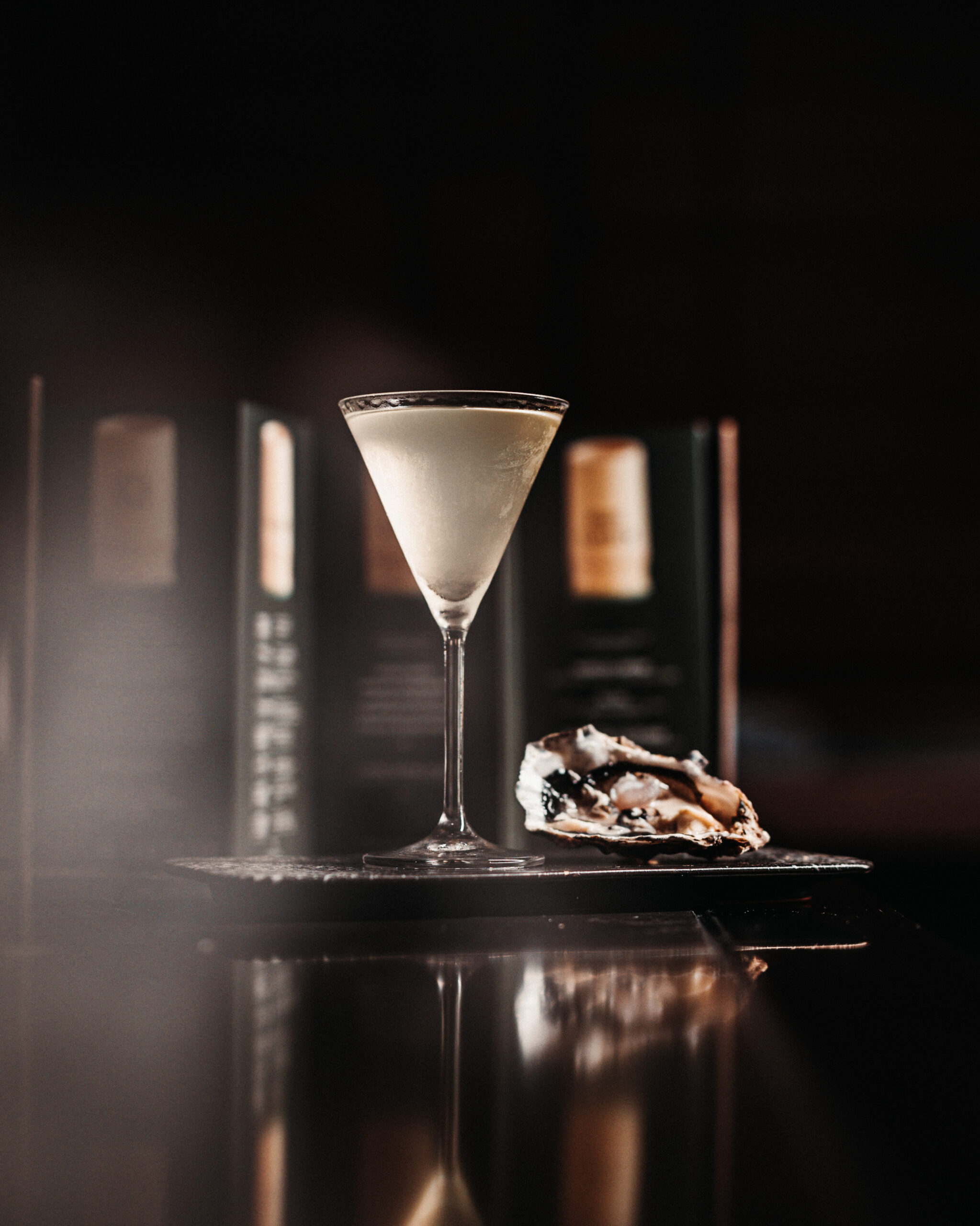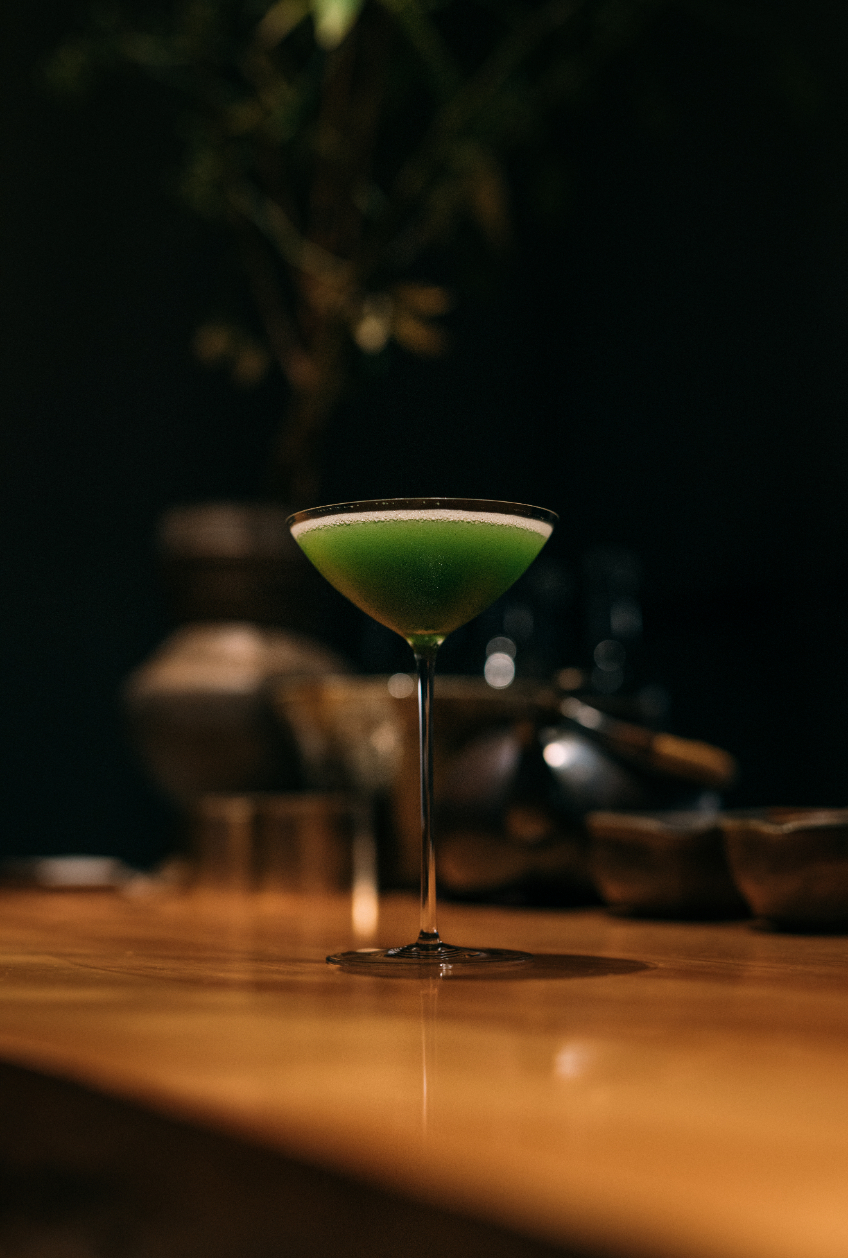
How Tea Quietly Took Over The Cocktail World
By Marc Braydon | 22 May 2025

In Tokyo, Seoul, and Hong Kong, bartenders are turning to tea to lead a new era of low-proof, high-concept drinking.

In Tokyo’s bustling Ginza district sits Mixology Salon, a bar that straddles serene tea sanctuary and high-concept mixology. Inside, I ordered the Signature Tea Cocktails Course, a four drink journey through Mixology Salon’s world of tea. The bartender carefully poured a Sencha Gin & Tonic which captures the scent of freshly harvested leaves. At the first sip, the blend of a crisp gin and sencha’s intrinsic bitterness unfolds harmoniously, demanding a moment of appreciation. This was equal parts tea, and cocktail.
Historically, tea and cocktails occupied separate worlds. Tea symbolized contemplation, tradition, and restraint; cocktails meant indulgence, social energy, and bold expression. Today, however, from Tokyo and Seoul to Hong Kong and London, these distinct rituals have begun to converge, reshaping the way we drink. Tea now offers itself as more than just an ingredient. Instead, it offers a framework for a new style of mindful mixology inspired by the slowness and complexity of tea culture at large.
The intersection of tea and alcohol, however, is not entirely new. Colonial Europe famously blended black tea into punches, balancing strong spirits and citrus. Japan’s post-war chūhai drinks similarly combined elements of tea and shōchū, creating a beloved category of sessionable cocktails. But today’s tea cocktails are distinctively modern, driven by innovative techniques such as cold-brewing, nitrous infusion, carbonation, redistillation, and fat-washing—processes that push tea’s sensory boundaries further than ever.
“Traditional tea brewing is wonderful, but modern technology reveals tea’s deeper potential.”
In Seoul, Bar Tea Scent owned by Andy Yoon embodies this movement. Andy, raised by a mother who had brewed teas for him since childhood, was inspired to propel a childhood comfort into the world of mixology. “When I started bartending at nineteen, tea already shaped how I understood flavor,” he explained. Using ultrasonic treatments and nitrous infusions, Andy crafts nuanced cocktails that balance complexity and simplicity. “Traditional tea brewing is wonderful, but modern technology reveals tea’s deeper potential.”
Bar Tea Scent’s “Tea & Tofu” cocktail exemplifies this particular mindfulness by pairing salted tofu syrup, raspberry jam, yuzu jam, and black tea in a shifting spectrum of flavors. “Tea inherently encourages mindfulness,” Andy noted. “It invites slowness, sensory attention, and deeper connections.”
In Hong Kong, Tell Camellia offers yet another compelling perspective. Co-founder Gagan Gurung meticulously curates single-origin teas such as Kenya’s Marinyn black tea or Japan’s revered matcha, and thoughtfully pairs them with ingredients uniquely representative of their terroir. “When we used Marinyn tea, we paired it with sweet potato—one of Kenya’s primary carbohydrate sources—and corn, a staple of the region’s agriculture,” Gagan explained. “For Japan, we’ve highlighted matcha with yuzu, and even boldly integrated natto, capturing Japan’s distinct culinary identity.”
Tell Camellia also employs advanced mixology techniques, including sous-vide infusions and redistillation. Gagan elaborated, “Many believe advanced technology isn’t essential, and I agree. But if available, why not embrace it fully?” Take their “TEA SEA” cocktail for example which uses Genmaicha tea and oyster meat blended and redistilled. “The result is an oceanic essence nearly impossible to capture without these advanced methods,” he said. Similarly, the “Tea Time,” uses centrifuged raspberry juice to clarify flavors, enhancing white tea’s delicate notes.

Gagan’s approach reflects a broader shift in Hong Kong’s sophisticated palate. “Consumers here constantly seek novelty and complexity. At Tell Camellia, each cocktail features tea alongside one daring ingredient, creating adventurous drinking experiences. This encourages our guests not just to sip cocktails, but to embark on sensory journeys curated through tea, creativity, and hospitality,” he emphasized.
In Tokyo, Mixology Salon similarly harnesses tea’s potential through a cocktail experience deeply informed by the philosophy of Japanese tea ceremony. Owner Shuzo Nagumo draws inspiration from the choreography and precision of otemae—not to imitate it wholesale, but to borrow its attentiveness. “Each movement of the tea ceremony has meaning and is beautiful,” he noted. “We incorporate elements like whisking matcha with a bamboo chasen or scooping tea leaves from a natsume with a chashaku.”
Rather than replicate tradition, Nagumo adapts its values of concentration, efficiency, and sensitivity to detail. “The idea is to be quick, but not hasty. Don’t make unnecessary noise. Don’t move wastefully. Pay attention to temperature and time, like when brewing gyokuro.”
For many of his guests, particularly international ones unfamiliar with Japanese teas, he begins with a moment of education. “I let them smell the leaves, describe what makes the tea special, and explain the flavors I’m aiming to express,” he said. “It’s about enjoying tea not only with the tongue, but also through scent and sensation.”
Nagumo notes subtle cultural preferences in how guests respond. “Japanese drinkers often gravitate toward clarity and simplicity such as cocktails like the Sencha Gin & Tonic or the Gyokuro Martini. But overseas guests are drawn to presentation, to what feels creative or surprising. So we adjust not only the flavor, but also the format.”

Modern mixology techniques like cold-brewing, carbonation, fat-washing, and redistillation transform tea’s potential significantly. Cold-brewing tea draws out subtle, aromatic qualities while minimizing bitterness. Nitrous infusion rapidly intensifies flavors without harsh tannins, while fat-washing binds tea’s aroma and mouthfeel to create luxurious textures. Clarification and redistillation techniques elevate tea cocktails into clear and silky libations that defy traditional expectations.
But beyond technique, tea’s emergence in cocktails mirrors a broader global shift toward mindful drinking and wellness. Younger consumers increasingly seek moderation, nuance, and complexity. These are qualities tea naturally provides. In response, bartenders use tea to craft sophisticated lower-alcohol drinks that emphasize savoring rather than rapid intoxication. Broadly, tea cocktails inherently carry a sense of ritual and mindfulness, reflecting modern desires for deeper experiences and meaningful interactions.
In response, bartenders use tea to craft sophisticated lower-alcohol drinks that emphasize savoring rather than rapid intoxication.
This trend unfolds differently yet harmoniously in the East and West. In Asia, tea-forward cocktails naturally extend traditional tea culture, enabling younger drinkers to embrace familiar tastes in new, exciting forms. As Andy Yoon observed, “Initially, Korean guests found tea cocktails unfamiliar. But post-COVID, they’ve eagerly explored these nuanced drinks.” Western drinkers, historically less connected to tea rituals, have enthusiastically embraced tea cocktails as sophisticated novelties, embodying worldly connoisseurship and culinary adventure. This exchange enriches both sides, generating fresh ideas and reinforcing tea’s global relevance.
Market trends underscore tea’s staying power too. In Japan, low-alcohol beverages, particularly tea-based chūhais, are growing in popularity among younger drinkers, as more consumers embrace nuanced, sessionable alternatives to beer. Meanwhile, Western markets witness growth in kombucha spritzes, tea-infused gins, and clarified punches. Tea is becoming a key flavor driver, universally appealing for its combination of complexity, wellness, and cultural depth.
Back at Mixology Salon, my final drink is a warm, comforting matcha whisky cocktail. Nutty, vegetal, gently sweet, and meditative, it embodies tea’s contemplative tradition combined effortlessly with modern cocktail innovation.
Andy captured this shift best: “Tea doesn’t merely taste good—it connects people and builds community. I hope the world continues exploring its endless possibilities.” Indeed, as tea evolves from an ingredient to a driver of experimentation, we see a fundamental transformation in cocktail culture. And while it’s tempting to frame tea’s rise in mixology purely as innovation, perhaps what we’re witnessing isn’t just innovation, but an industry-wide rediscovery of a timeless truth: that drinking, at its best, is a thoughtful, sensory-rich experience.
